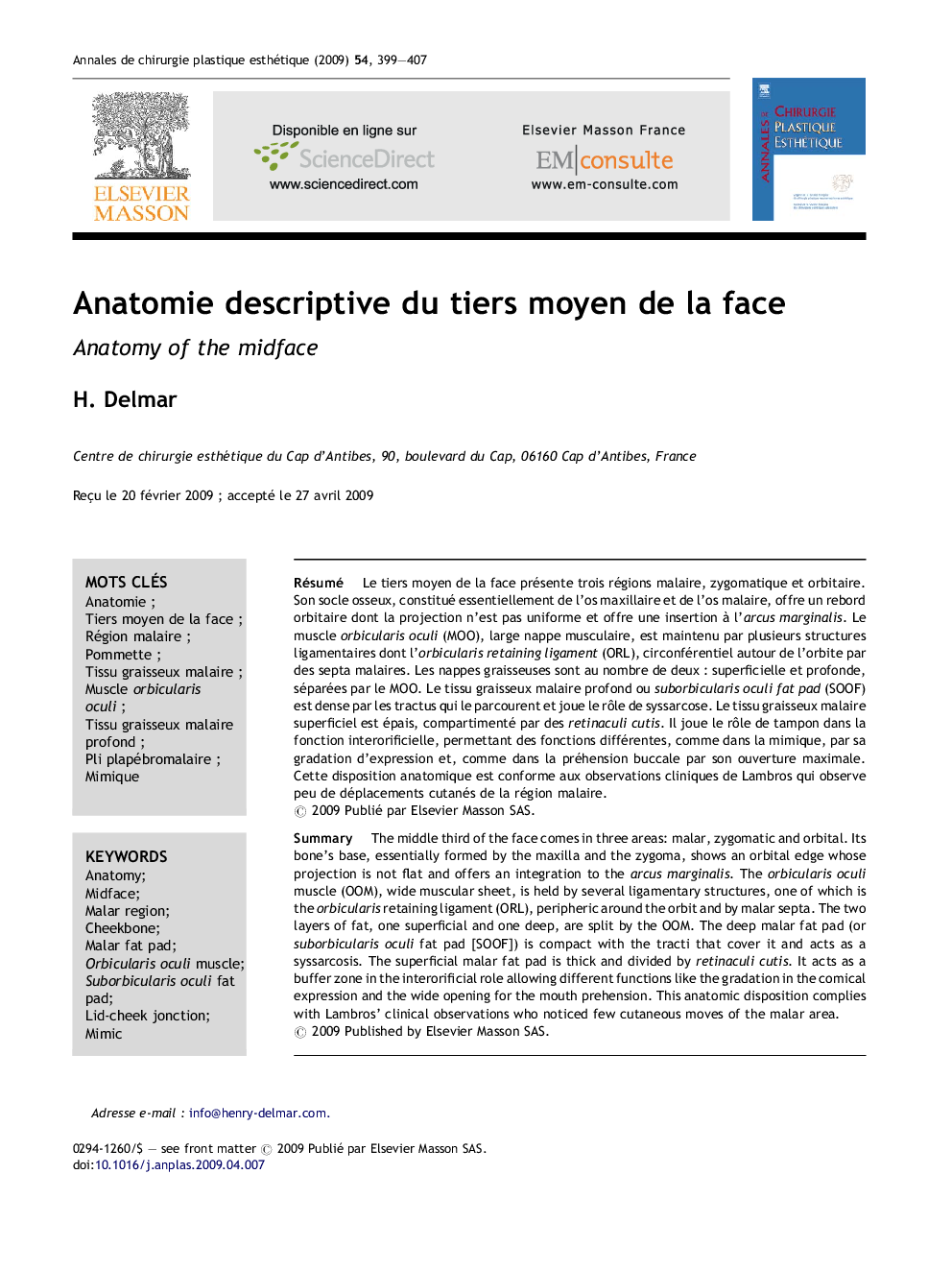| Article ID | Journal | Published Year | Pages | File Type |
|---|---|---|---|---|
| 3185159 | Annales de Chirurgie Plastique Esthétique | 2009 | 9 Pages |
RésuméLe tiers moyen de la face présente trois régions malaire, zygomatique et orbitaire. Son socle osseux, constitué essentiellement de l’os maxillaire et de l’os malaire, offre un rebord orbitaire dont la projection n’est pas uniforme et offre une insertion à l’arcus marginalis. Le muscle orbicularis oculi (MOO), large nappe musculaire, est maintenu par plusieurs structures ligamentaires dont l’orbicularis retaining ligament (ORL), circonférentiel autour de l’orbite par des septa malaires. Les nappes graisseuses sont au nombre de deux : superficielle et profonde, séparées par le MOO. Le tissu graisseux malaire profond ou suborbicularis oculi fat pad (SOOF) est dense par les tractus qui le parcourent et joue le rôle de syssarcose. Le tissu graisseux malaire superficiel est épais, compartimenté par des retinaculi cutis. Il joue le rôle de tampon dans la fonction interorificielle, permettant des fonctions différentes, comme dans la mimique, par sa gradation d’expression et, comme dans la préhension buccale par son ouverture maximale. Cette disposition anatomique est conforme aux observations cliniques de Lambros qui observe peu de déplacements cutanés de la région malaire.
SummaryThe middle third of the face comes in three areas: malar, zygomatic and orbital. Its bone's base, essentially formed by the maxilla and the zygoma, shows an orbital edge whose projection is not flat and offers an integration to the arcus marginalis. The orbicularis oculi muscle (OOM), wide muscular sheet, is held by several ligamentary structures, one of which is the orbicularis retaining ligament (ORL), peripheric around the orbit and by malar septa. The two layers of fat, one superficial and one deep, are split by the OOM. The deep malar fat pad (or suborbicularis oculi fat pad [SOOF]) is compact with the tracti that cover it and acts as a syssarcosis. The superficial malar fat pad is thick and divided by retinaculi cutis. It acts as a buffer zone in the interorificial role allowing different functions like the gradation in the comical expression and the wide opening for the mouth prehension. This anatomic disposition complies with Lambros’ clinical observations who noticed few cutaneous moves of the malar area.
